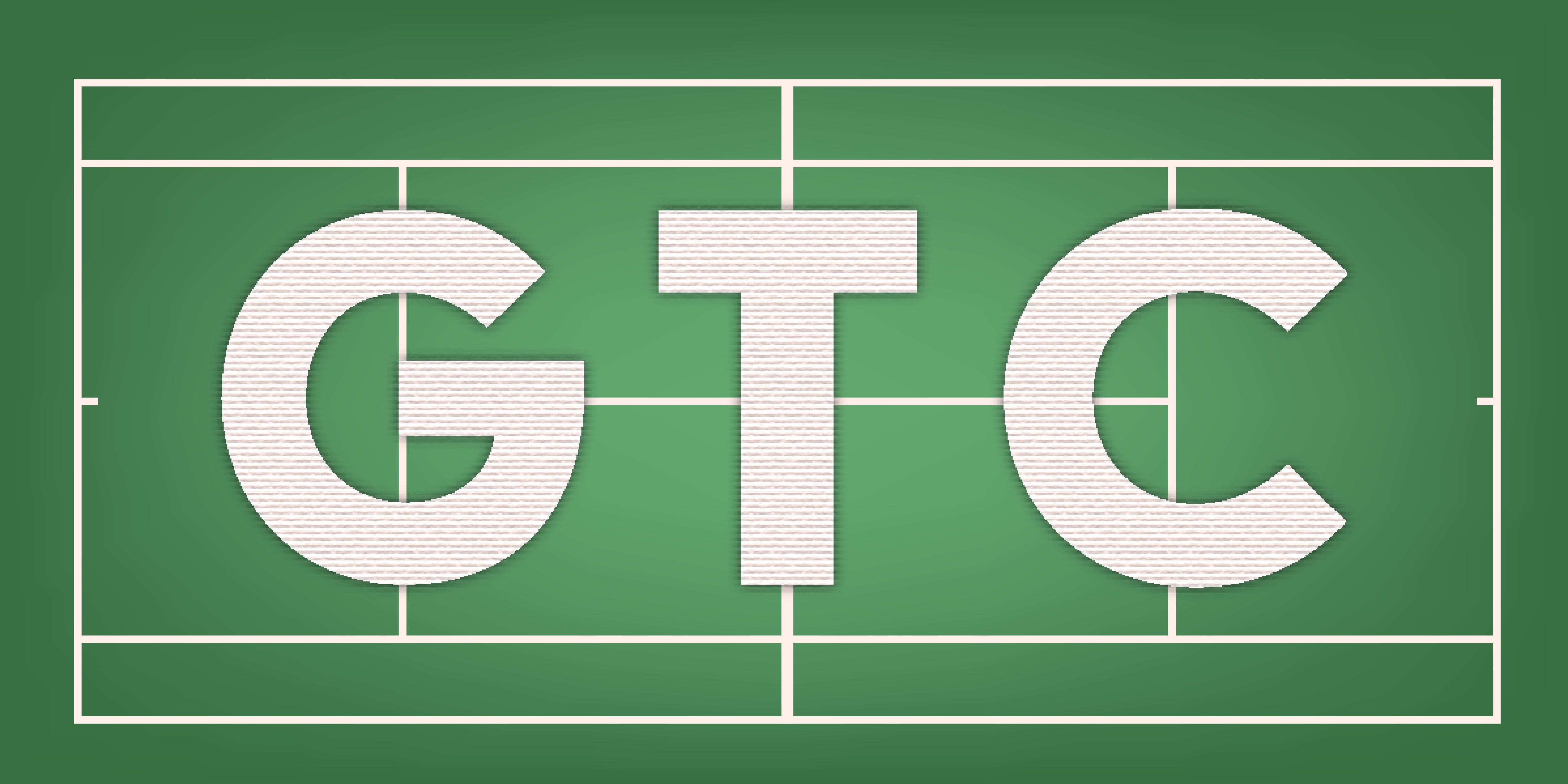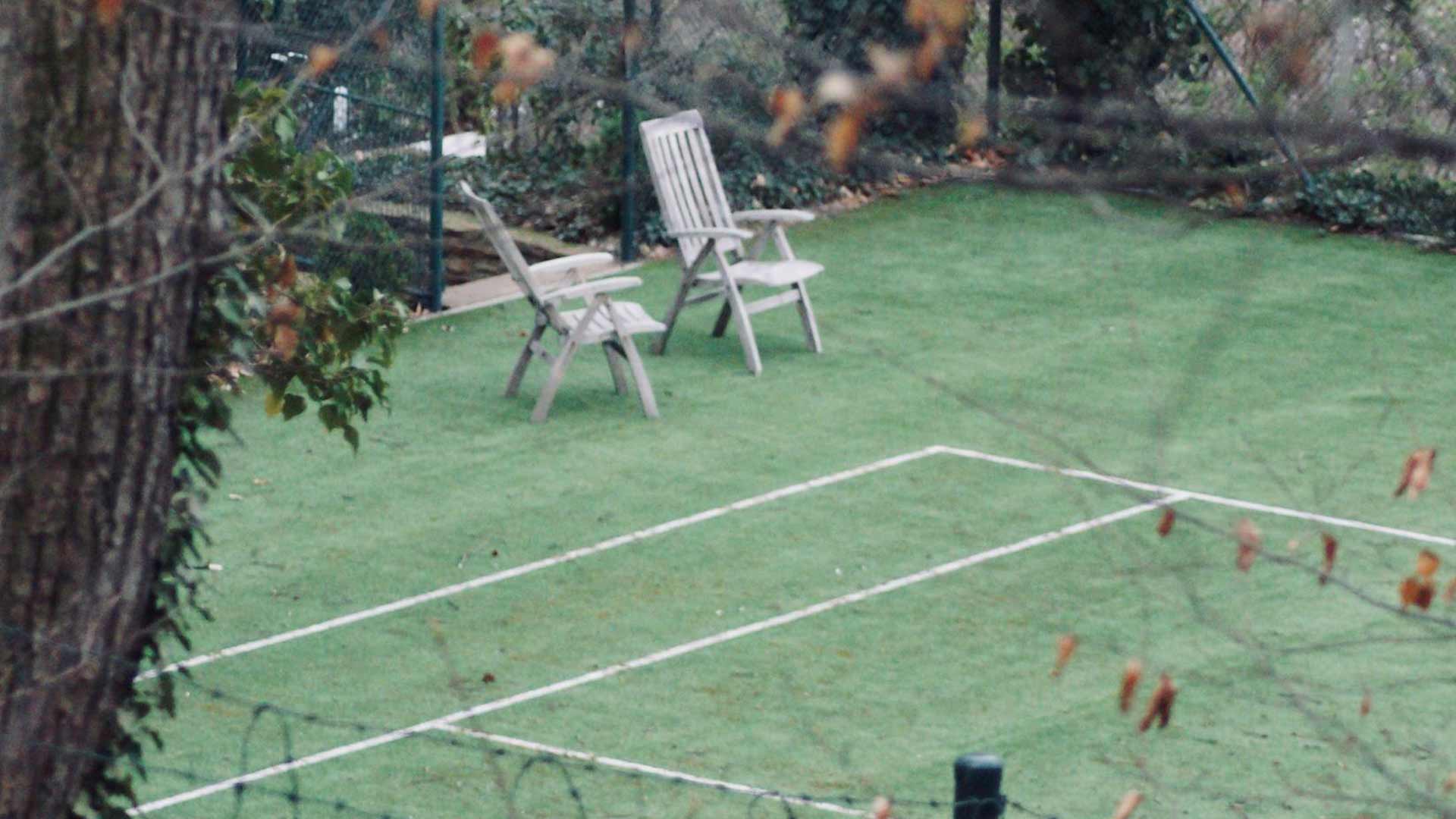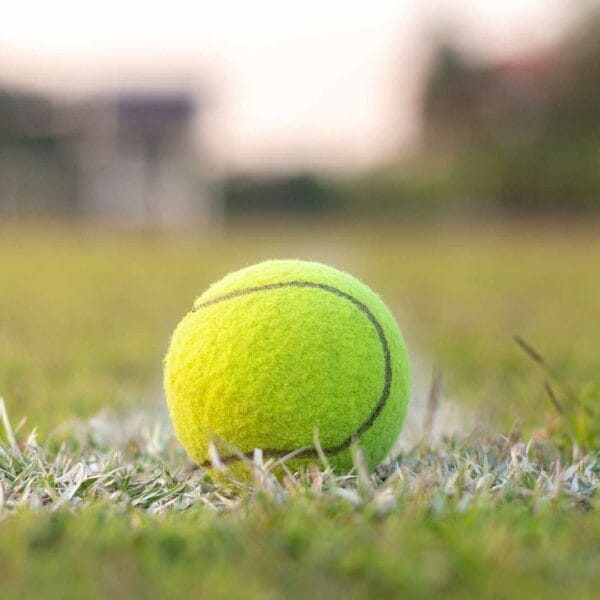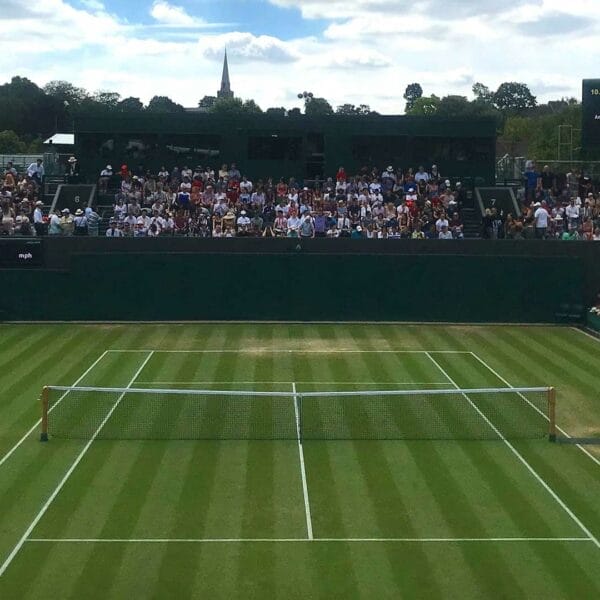Introduction to Sponsorship in Tennis
Sponsorship opportunities in tennis courts have become increasingly popular as a means to offset the costs associated with maintaining these facilities. A well-executed sponsorship program can generate revenue and foster a sense of community among players, spectators, and local businesses.
Tennis courts are often considered hubs for social activity, hosting various events and tournaments throughout the year. This exposure presents an ideal opportunity for sponsors to reach their target audience, increasing brand visibility and awareness. By partnering with local businesses, organisations, or individuals, tennis clubs and facilities can establish mutually beneficial relationships that support the goals of both parties.
The benefits of sponsorship opportunities extend beyond financial gains; they also contribute to the overall development and growth of the tennis community. By engaging with potential sponsors, tennis clubs can build lasting partnerships that promote the sport, encourage participation, and drive interest in local tennis programs.
In recent years, innovative sponsorship models have emerged, allowing tennis clubs to think creatively about securing funding. These models may involve naming rights, event sponsorships, or even product placement within the facility itself. As the demand for unique sponsorship experiences continues to grow, tennis clubs must adapt and innovate to stay competitive in the market.
By exploring sponsorship opportunities, tennis clubs can unlock new revenue streams, strengthen their position within the community, and ensure the long-term sustainability of their facilities. Understanding the intricacies of sponsorship opportunities is crucial for tennis clubs seeking to optimise their resources and maximise their impact.
Benefits of Sponsorships for Grass Tennis Court Maintenance
Sponsorship opportunities are vital to maintaining grass tennis courts. One primary advantage of sponsorships is that they enable tennis clubs to allocate funds for essential repairs, renovations, and upgrades without compromising their operational budgets. By leveraging sponsorship revenue, clubs can invest in high-quality equipment, materials, and labour to maintain the health and integrity of the grass surface.
Regular maintenance is crucial for extending the lifespan of grass tennis courts, ensuring player safety, and preventing costly repairs in the future. Sponsorships allow clubs to prioritise preventative measures, such as regular aeration, fertilisation, and irrigation system maintenance, which are essential for maintaining optimal playing conditions. Furthermore, sponsorships can facilitate the implementation of innovative technologies and best practices in grass court management, enabling clubs to stay ahead of the curve and provide exceptional playing experiences for both members and visitors.
In addition to financial benefits, sponsorships can also foster a sense of community and social responsibility among club members, sponsors, and local stakeholders. By promoting transparency and accountability in sponsorship arrangements, clubs can build trust and credibility with their partners, ultimately driving long-term loyalty and commitment. Moreover, sponsorships can serve as a catalyst for grassroots initiatives, such as junior development programs, community outreach projects, and environmental conservation efforts, which can have a profound impact on the local tennis ecosystem.
Effective sponsorship strategies can also help tennis clubs develop strong relationships with key stakeholders, including local authorities, business leaders, and sports organisations. By collaborating with influential partners, clubs can tap into valuable expertise, resources, and networks that can be leveraged to drive growth, innovation, and success within the tennis community. Ultimately, by harnessing the power of sponsorships, tennis clubs can create sustainable, thriving environments that benefit all stakeholders involved.
Types of Sponsors for Grass Tennis Courts
Tennis clubs seeking to leverage sponsorship opportunities for grass tennis court maintenance often encounter a diverse range of potential partners. Understanding the different types of sponsors can help clubs tailor their approaches to attract suitable supporters and maximize the effectiveness of their sponsorship programs.
Local Businesses and Corporations
Many local businesses and corporations view sponsorships as an opportunity to engage with their target audience, promote brand awareness, and demonstrate corporate social responsibility. These entities may offer financial support, products, or services in exchange for branding rights, event hosting privileges, or other promotional opportunities.
Individual Philanthropists and Donors
Private individuals who share a passion for tennis or community development may choose to sponsor grass tennis courts as a way to give back to their local communities. These donors often bring unique perspectives and flexibility to sponsorship agreements, allowing clubs to negotiate customised partnerships that meet specific needs.
Government Agencies and Public Organisations
Government agencies and public organisations may provide funding or resources for grass tennis court maintenance as part of broader initiatives to promote physical activity, community development, or economic growth. These partnerships can help clubs access additional resources, expertise, and networking opportunities.
Sports Equipment Manufacturers and Suppliers
Companies specialising in sports equipment and supplies often see sponsorships as a means to showcase their products, gather feedback from users, and build brand loyalty. These partners may contribute financially or provide product donations in exchange for exposure and promotional opportunities.
Grassroots Tennis Associations and Clubs
Other tennis clubs or associations within the same region or network may collaborate on sponsorship initiatives, sharing resources, expertise, and risk to achieve common goals. This type of partnership can foster a sense of camaraderie and cooperation among clubs while amplifying their collective impact.
Community Groups and Charities
Community groups and charities focused on youth development, education, or environmental conservation may partner with tennis clubs to promote shared values and objectives. These collaborations can lead to innovative programming, increased visibility, and enhanced reputation for both parties involved.
By understanding these various types of sponsors, tennis clubs can develop targeted strategies to attract and retain supportive partners, ultimately securing the necessary resources to maintain high-quality grass tennis courts and deliver exceptional experiences for both players and spectators.
Identifying Potential Sponsorship Partners
Tennis clubs must identify potential partners whose interests align with their goals and objectives to establish successful sponsorship relationships. To do this, they must conduct a thorough analysis of their needs, target audience, and existing networks.
Key Factors to Consider
1. Demographics
Identify local businesses, corporations, and organisations that cater to your target audience, such as families, young professionals, or retirees.
2. Industry Affiliations
Research companies operating in industries closely related to tennis, such as sports equipment manufacturers, fitness centres, or hospitality providers.
3. Community Involvement
Look for organisations actively engaged in community development, charity work, or environmental conservation efforts that resonate with your club’s values.
4. Brand Values
Align with brands that share your club’s mission, vision, and values to create authentic and meaningful partnerships.
5. Network Connections
Leverage your club’s existing network by reaching out to friends, family members, or colleagues who may have connections with potential sponsors.
Potential Sources for Identifying Sponsors
1. Local Business Directories
Utilise online directories, such as Yelp or Google Maps, to find local businesses and corporations in your area.
2. Social Media Platforms
Engage with local businesses and organisations on social media platforms to build relationships and stay informed about their activities.
3. Networking Events
Attend local business events, conferences, and trade shows to connect with potential sponsors and gain insight into their interests.
4. Referrals
Ask current sponsors, board members, or volunteers for recommendations and introductions to potential partners.
5. Online Research Tools
Use tools like LinkedIn or Crunchbase to research companies, their employees, and their philanthropic efforts.
By carefully considering these factors and exploring various sources, tennis clubs can effectively identify potential sponsorship partners that will help them achieve their goals and maintain high-quality grass tennis courts.
Creating Attractive Sponsorship Packages
Developing an attractive sponsorship package is crucial for securing valuable partnerships with potential sponsors. A well-crafted package should highlight the benefits of partnering with your tennis club and showcase the unique opportunities for brand exposure and community engagement.
Key Components of an Attractive Sponsorship Package
1. Clear Objectives
Define specific goals and outcomes for each sponsorship tier, ensuring that sponsors understand what they can expect from their investment.
2. Customised Brand Integration
To help sponsors increase their visibility among your target audience, offer tailored branding opportunities, such as logo placement, signage, and promotional materials.
3. Exclusive Experiences
Provide sponsors with access to exclusive events, VIP areas, or behind-the-scenes experiences that foster a sense of belonging and appreciation for their support.
4. Community Engagement
Highlight opportunities for sponsors to engage with your community through volunteer programs, charity initiatives, or grassroots outreach projects.
5. Data-Driven Insights
Offer sponsors access to data and analytics on event attendance, demographics, and engagement metrics, enabling them to track the effectiveness of their partnership.
6. Recognition and Rewards
Develop a system for recognising and rewarding sponsors for their contributions, such as annual awards, special recognition at events, or exclusive networking opportunities.
7. Flexibility and Scalability
Design packages that accommodate different budget sizes and sponsorship tiers, allowing smaller businesses or individuals to participate alongside larger corporations.
Tiers of Sponsorship Packages
1. Entry-Level
Basic branding opportunities, event tickets, and limited community engagement.
2. Mid-Tier
Enhanced branding, increased event access, and moderate community involvement.
3. Premium
High-end branding, exclusive events, and significant community engagement opportunities.
4. Title Sponsor
Comprehensive branding, VIP access, and extensive community involvement.
Benefits of Offering Tiered Sponsorship Packages
1. Increased Revenue Streams: Offering multiple sponsorship tiers can attract a broader range of sponsors and generate additional revenue.
2. Improved Sponsor Retention: Tailored packages enable sponsors to select the level of involvement that best suits their needs, thereby increasing the likelihood of long-term partnerships.
3. Enhanced Brand Differentiation: Unique sponsorship packages enable you to differentiate your tennis club from others, making it more appealing to potential sponsors.
By creating attractive sponsorship packages that cater to diverse needs and budgets, tennis clubs can attract a wide range of sponsors and develop strong, mutually beneficial relationships that drive growth and success.
Effective Communication Strategies for Sponsorship Outreach
Effective communication strategies play a crucial role in successful sponsorship outreach, facilitating the development of strong relationships between tennis clubs and potential sponsors. To maximize the impact of your sponsorship efforts, consider implementing the following effective communication strategies:
Crafting Compelling Messaging
Develop clear, concise messaging that highlights the unique benefits of partnering with your tennis club. Emphasise how your organisation aligns with potential sponsors’ values and objectives, demonstrating the mutual value proposition.
Targeted Outreach
Identify key decision-makers within potential sponsor organisations and tailor your approach to resonate with their interests and priorities. Utilize industry-specific language and terminology to establish credibility and demonstrate expertise.
Multichannel Communication
Leverage various channels to reach potential sponsors, including email marketing campaigns, social media advertising, phone calls, and in-person meetings. This ensures that your message reaches a broad audience and increases the likelihood of engaging with interested parties.
Personalised Relationships
Foster genuine connections with potential sponsors by highlighting shared goals, values, and interests. Encourage open dialogue and listen attentively to their concerns, demonstrating a commitment to understanding their needs and preferences.
Regular Updates and Reporting
Communicate regularly with existing sponsors and provide timely updates on event progress, attendance figures, and other relevant metrics. This helps build trust and reinforces the value of their partnership.
Sponsor Appreciation Events
Host exclusive events or activities to recognise and reward loyal sponsors, acknowledging their contributions and fostering a sense of community and belonging.
Data-Driven Storytelling
Use data and statistics to tell compelling stories about the impact of your tennis club’s events and programs. Highlight the tangible benefits of sponsoring your organization, such as increased brand awareness, customer engagement, and community involvement.
Collaborative Partnerships
Explore opportunities for co-branding, joint marketing initiatives, and cross-promotional activities with other local businesses or organisations. This can help to expand your network, increase visibility, and create new revenue streams.
By incorporating these effective communication strategies into your sponsorship outreach efforts, tennis clubs can build stronger relationships with potential sponsors, increase the chances of securing valuable partnerships, and ultimately drive growth and success.
Measuring the Success of Sponsorship Programs
Evaluating the effectiveness of sponsorship programs is crucial to ensure that they meet their intended goals and deliver value to both the tennis club and its partners. A well-designed evaluation framework enables tennis clubs to assess the return on investment (ROI) of their sponsorship efforts, identify areas for improvement, and make informed decisions about future partnerships.
Key Performance Indicators (KPIS): Establish a set of measurable KPIS to track the success of sponsorship programs, such as:
– Event attendance and participation rates
– Brand awareness and recognition metrics (e.g., social media engagement, website traffic)
– Sales and revenue generated through sponsored events or promotions
– Customer acquisition and retention rates
– Net promoter score (NPS) and overall satisfaction ratings
Data Collection Methods: Implement a range of data collection methods to gather insights on sponsorship program performance, including:
– Surveys and feedback forms to capture sponsor and attendee opinions
– Social media analytics tools to monitor online engagement and sentiment
– Website analytics software to track website traffic and conversion rates
– Sales and revenue tracking systems to measure financial returns
– Regular check-ins and progress reports to stay informed about ongoing projects
Benchmarking and Comparison
Compare sponsorship program performance against industry benchmarks and internal targets to gauge progress and identify areas for improvement. This involves analysing data from previous years, similar events, or peer organisations to establish a baseline for comparison.
Continuous Evaluation and Improvement
Sponsorship programs should be regularly reviewed and refined based on collected data and feedback. Messaging, targeting, and tactics should be adjusted as needed to optimize program effectiveness and achieve desired outcomes.
By establishing a robust evaluation framework and regularly assessing the performance of their sponsorship programs, tennis clubs can ensure that their partnerships deliver maximum value and drive long-term growth and success.
Budgeting for Sponsorship Costs and Returns
Effective budgeting is essential for managing sponsorship programs for grass tennis courts. It allows tennis clubs to allocate resources efficiently, maximise returns, and ensure that sponsorship efforts align with organisational objectives. A well-planned budget helps mitigate risks, identify potential revenue streams, and create a clear roadmap for future growth.
Sponsorship Cost Components
When creating a budget for sponsorship programs, consider the following key cost components:
– Administrative expenses: Include staff time, equipment, and other overhead costs associated with managing sponsorship relationships.
– Marketing and promotion expenses: Allocate funds for advertising, event production, and promotional materials to raise brand awareness and drive engagement.
– Event-related expenses: Cover costs such as venue rental, catering, and entertainment for sponsored events.
– Research and development expenses: Invest in market research, competitor analysis, and new business opportunities to identify potential sponsors and tailor packages accordingly.
– Contingency fund: Set aside a portion of the budget for unexpected expenses or changes in sponsorship agreements.
Calculating Return on Investment (ROI):
To determine the return on investment (ROI) of sponsorship programs, calculate the revenue generated by each partnership and compare it to the associated costs. Consider the following metrics:
– Revenue generated through sponsored events or promotions
– Sales and revenue increases attributed to sponsorship exposure
– Increased membership or participant numbers resulting from sponsored activities
– Enhanced brand visibility and reputation due to sponsorship involvement
Return on Investment (ROI) Formula:
ROI = (Revenue Generated – Total Costs) / Total Costs
Example: If a tennis club generates $10,000 in revenue from a sponsored tournament and incurs $5,000 in costs, the ROI would be:
ROI = ($10,000 – $5,000) / $5,000 = 100%
This indicates a positive return on investment (ROI), demonstrating that the sponsorship program has delivered a return on investment.
Long-Term Sustainability through Ongoing Sponsorships
Long-term sustainability is crucial for maintaining the financial health and operational efficiency of grass tennis courts. One effective way to achieve this goal is through ongoing sponsorships. By securing long-term partnerships with committed sponsors, tennis clubs can reduce their reliance on short-term funding sources and create a stable financial foundation.
Benefits of Ongoing Sponsorships
Ongoing sponsorships offer several benefits that contribute to long-term sustainability. These include:
Predictable revenue streams: Long-term sponsorships provide a steady income stream, allowing tennis clubs to plan and budget more effectively.
– Reduced administrative burdens: Managing multiple short-term sponsorships can be time-consuming and resource-intensive. Ongoing sponsorships simplify this process, freeing up staff to focus on core activities.
– Enhanced credibility and reputation: Securing long-term sponsorships demonstrates a tennis club’s stability and appeal, making it more attractive to potential partners and members.
– Improved relationship building: Ongoing sponsorships foster deeper relationships between tennis clubs and their sponsors, resulting in increased collaboration and mutual benefits.
Strategies for Securing Ongoing Sponsorships
To attract and retain long-term sponsors, tennis clubs should employ strategies that demonstrate their commitment to partnership and community engagement. This includes:
– Developing customised sponsorship packages that meet the needs and goals of potential partners.
– Providing regular updates and progress reports to keep sponsors informed and engaged.
– Offering exclusive access to events, facilities, and networking opportunities.
– Recognising and rewarding loyal sponsors through public acknowledgement and special perks.
– Continuously evaluating and improving sponsorship offerings to ensure they remain competitive and appealing.
Best Practices for Maintaining Ongoing Sponsorships
To maximise the benefits of ongoing sponsorships, tennis clubs should adhere to best practices that prioritise communication, transparency, and accountability. These include:
– Regularly reviewing and updating sponsorship agreements to reflect changing circumstances and goals.
– Establishing clear expectations and performance metrics for both parties.
– Fostering open and transparent communication channels to address concerns and opportunities.
– Demonstrating appreciation and gratitude towards sponsors through recognition and rewards.
– Continuously seeking feedback and suggestions from sponsors to improve the partnership experience.
By prioritising ongoing sponsorships and implementing effective strategies for securing and maintaining these partnerships, grass tennis courts can achieve long-term sustainability and thrive in an increasingly competitive environment.
Conclusion
In conclusion, incorporating sponsorship opportunities into grass tennis court maintenance is a viable solution for offsetting costs while fostering long-term sustainability. By leveraging various types of sponsors, creating attractive packages, and implementing effective communication strategies, tennis clubs and organisations can generate significant revenue streams to support their facilities. Moreover, successful sponsorship programs enable the upkeep of pristine grass tennis courts, providing an exceptional playing experience for athletes and enthusiasts alike. Ultimately, embracing sponsorship partnerships is crucial for maintaining the integrity and appeal of grass tennis courts, ensuring they remain accessible and enjoyable for future generations.











